Welcome to the wild and wacky world of Canadian odors! Brace yourself as we embark on a pungent adventure through the Great White North, unveiling the creatures that make noses crinkle and eyes water. Get ready to take a whiff of the smelliest animals in Canada.
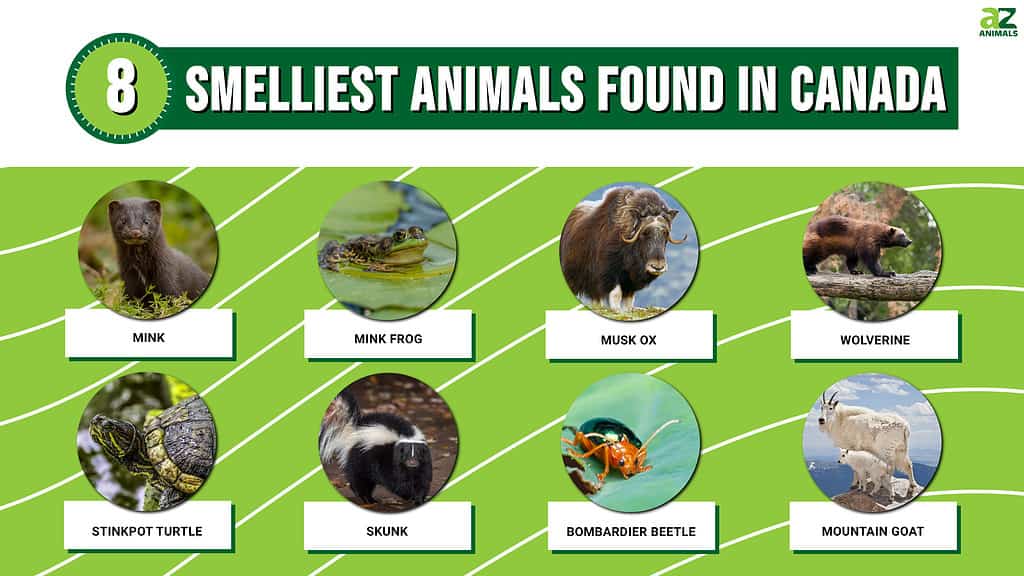
Mink
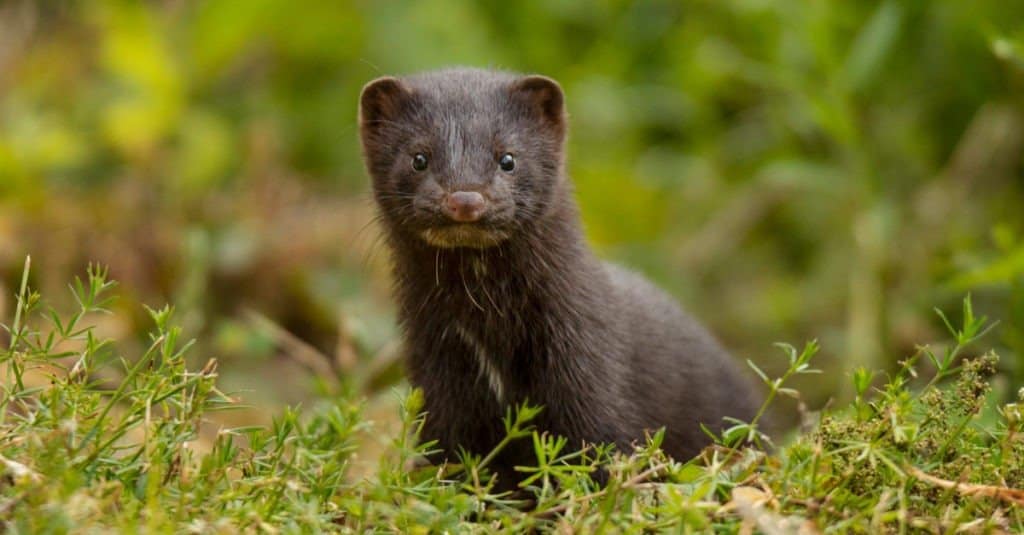
Mink are cute and stinky. They are one of the smelliest animals in Canada.
©An inspiration/Shutterstock.com
Ah, mink! These small and slender members of the weasel family are found across North America, Europe, and Asia. They have a distinctive scent that some have compared to a skunk, which is why they’re sometimes called “stinkers!
Mink live in wetlands, usually along the banks of rivers and lakes, where they can find plenty of prey. They mainly eat small rodents, birds, and fish, but they’re also known to snack on frogs, crayfish, and even insects.
These curious critters certainly stand out in the animal kingdom. From their skunky scent to their long, slender bodies and semi-aquatic lifestyle, mink are certainly one of a kind.
Mink Frog
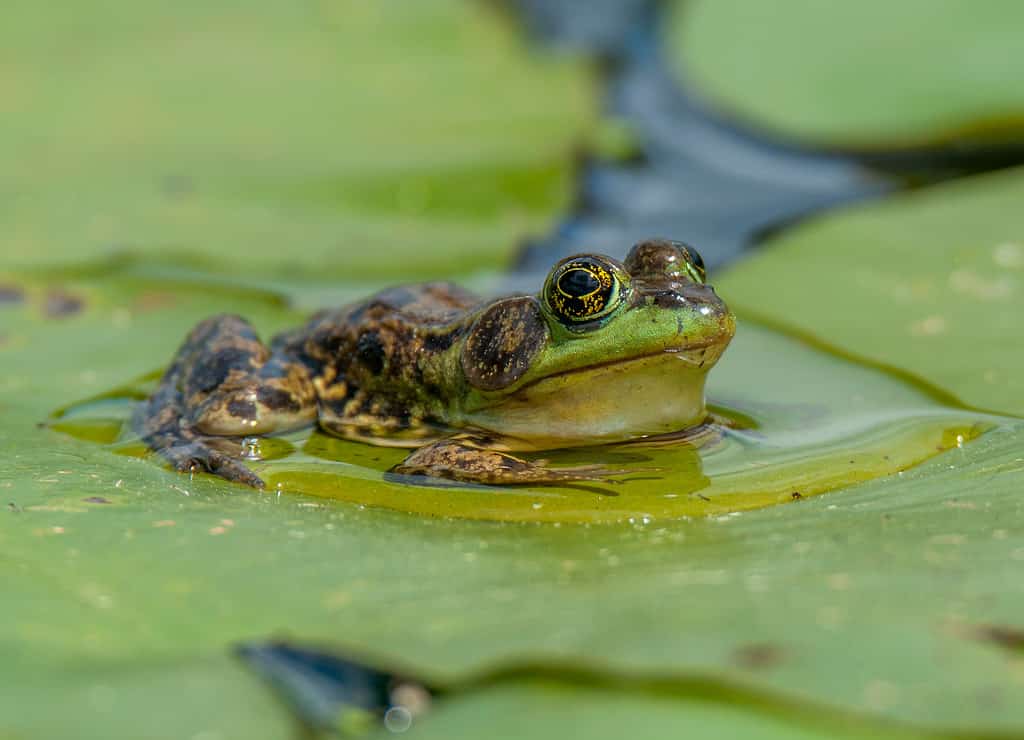
They don’t look like they would smell bad, but trust us, they do!
©Gerald A. DeBoer/Shutterstock.com
Mink frogs are tiny, smelly amphibians that have been making a splash (sometimes quite literally!) in the world of conservation. These little critters are as cute as they are smelly, but don’t let that stop you from learning more about them!
Physically, mink frogs range in size from 1.5 to 3 inches and are usually brown in color with black stripes on their backs and legs. They have a diet of earthworms, insects, and crustaceans. They live in ponds, marshes, and woodland streams throughout Canada, the northern United States, and parts of Mexico.
So why do mink frogs smell so bad? Well, it turns out that these frogs produce a foul-smelling secretion from their skin to deter predators. Not the most pleasant thing, but hey, it’s a frog’s way of defending itself!
Musk Ox
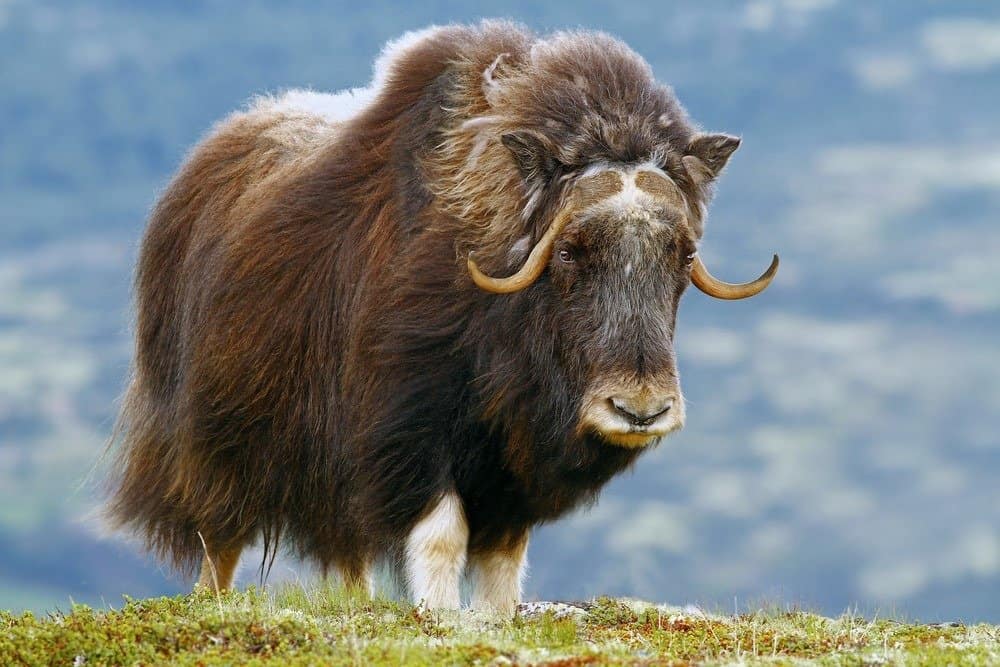
Musk oxen were introduced to Canada in the 1970s.
©Martin Hejzlar/Shutterstock.com
If you’ve ever encountered a musk ox, you know why they call it that: the smell is unbelievably bad! But these stinky creatures have more to offer than just a bad odor.
Musk ox are massive animals, standing up to 6 feet tall and weighing up to 800 lbs! They have shaggy coats and long horns, perfect for surviving in the harsh Arctic tundra.
Their diet consists of grasses, sedges, and lichen, giving them the nutrition they need to survive in the cold climate.
Musk oxen live in the Arctic tundra regions of North America and Greenland. They were introduced to eastern Canada in the 1970s. They like to stay close to the coastlines, as that’s where the best grazing grounds are.
So the next time you encounter a musk ox, remember to appreciate its majestic size rather than its smelly presence!
Wolverine
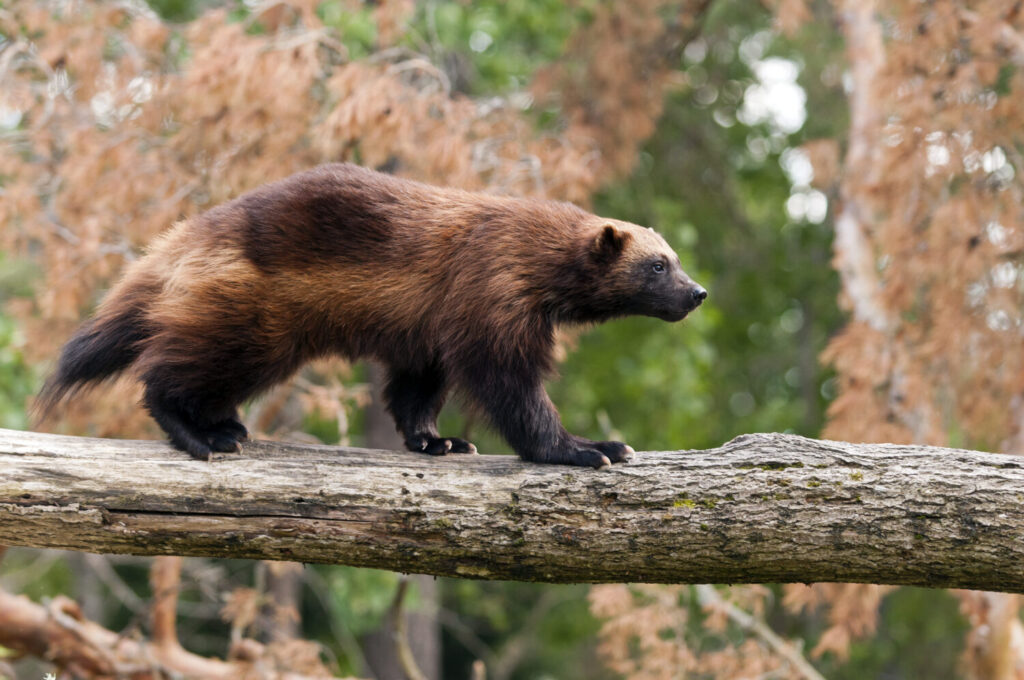
If you see a wolverine, hold your nose. They are one of the smelliest animals in Canada.
©Nazzu/Shutterstock.com
They’re not just a Marvel superhero! These furry critters are truly the stinkiest superheroes of the animal kingdom. With their tough, stocky bodies and thick coats of fur, they look like they can take on anything – and they usually do.
Wolverines are the ultimate opportunistic omnivores, meaning that their diet consists of pretty much anything that’s available. They love to snack on small mammals, birds, and even plants, as well as scavenge after other predators.
Their range is pretty vast, stretching across the northern hemisphere from Canada and Alaska to Scandinavia and Russia. They live in a variety of habitats, from tundra to mountains to forests, and they usually make their dens in rock crevices and hollow trees.
And, of course, they smell bad. They are one of the smelliest animals in Canada! Wolverines have a special gland near their tails, which produces a powerful musk that is used to mark their territory and repel predators – and it’s this that gives them their distinctive stink.
So, if you’re ever out in the wild and smell something a bit off, you can be sure that a Wolverine is nearby!
Stinkpot Turtle

The common musk turtle, or stinkpot turtle, is aptly named.
©iStock.com/AntonyMoran
Ah, the stinkpot turtle (Sternotherus odoratus) — a truly unique species of reptile that will leave a lasting impression on you. They look like a typical turtle, with a domed shell and a long tail, but their smell is anything but typical. Oh, why do stinkpots smell so bad? Well, let’s take a look at what makes them so smelly.
Stinkpots are native to the eastern and central United States, southern Quebec, and southern Ontario. They prefer to live in wetlands and slow-moving rivers. They feed primarily on snails, clams, worms, and aquatic insect larvae.
Stinkpot turtles are also known to be quite sassy. They are most active at night, when they can be found basking in the moonlight, and they are not afraid to defend themselves when necessary.
So, why do stinkpots smell so bad? It turns out that they produce a foul-smelling liquid from glands located near their tails. This liquid serves to deter predators, and it is also what gives these turtles their name.
Despite their smelly reputation, stinkpot turtles are an important part of the local ecosystem. So, the next time you come across one of these smelly reptiles, don’t be too quick to judge – they are crucial members of their wetland homes!
Skunk
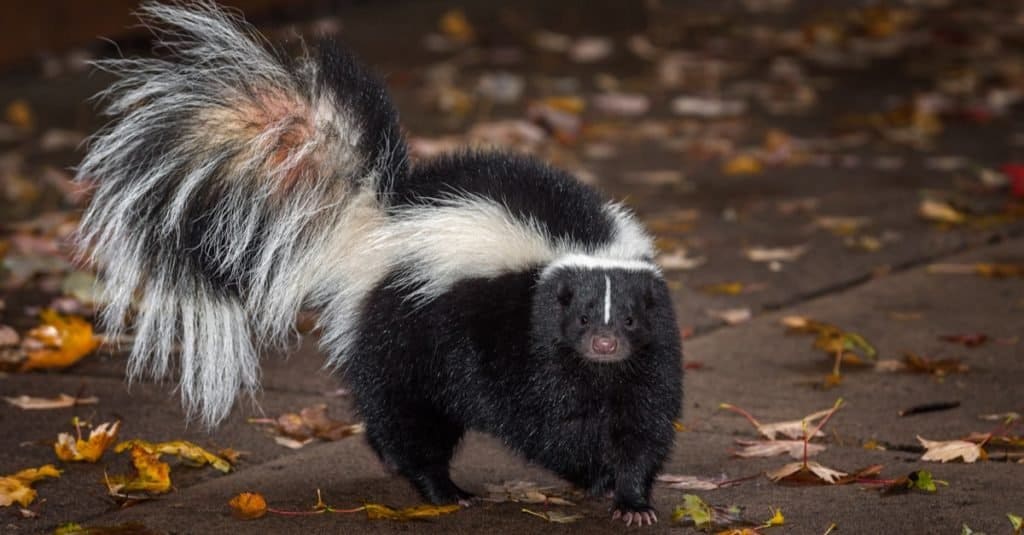
Striped skunks live in almost every area of Canada.
©Geoffrey Kuchera/Shutterstock.com
We love skunks! Those adorable little creatures with their black and white fur, big eyes, and bushy tails. But don’t let their cuteness fool you – these critters are notorious for their smell.
Skunks in Canada live mainly in forests, swamps, and meadows. They roam around in search of their favorite meal – insects, small rodents, and sometimes even plants. They are most active at night. As far as their range goes, skunks can be found in most provinces and territories in Canada.
As for why they smell so bad – they have a special gland near their tail that produces an awful scent when the skunk feels threatened.
So, if you’re out and about in Canada and you catch a whiff of something bad, it’s likely to be a skunk! Be sure to keep your distance and enjoy the view – but don’t get too close!
Bombardier Beetle
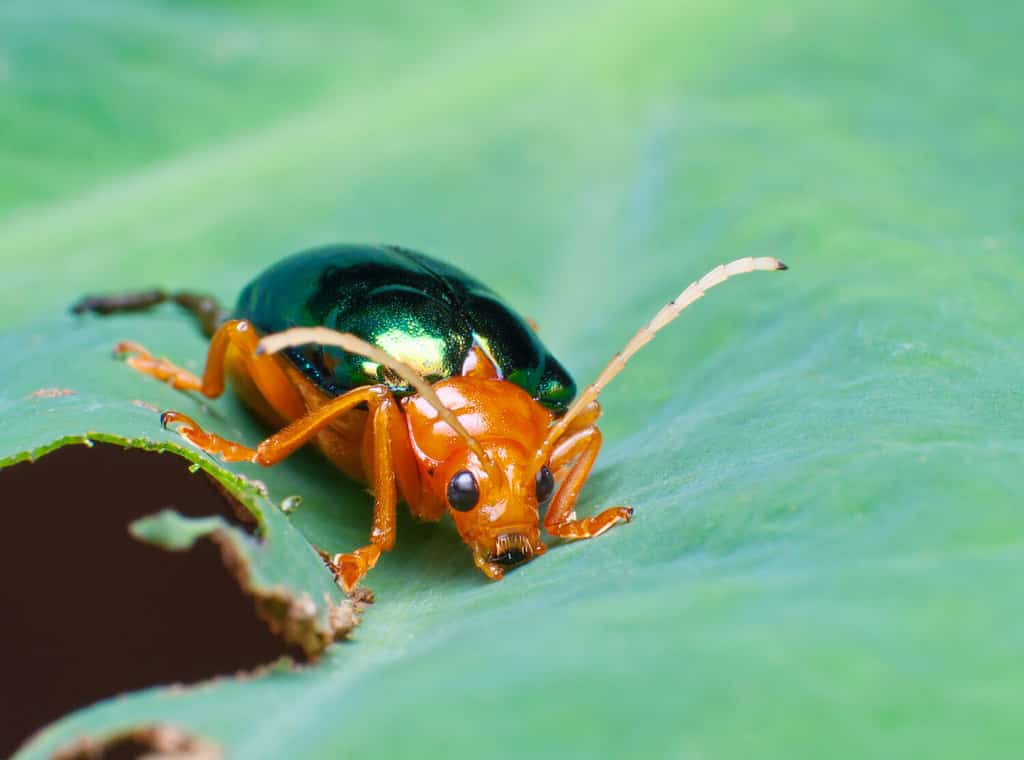
Bombardier beetles are a smelly animal that lives in Canada.
©johannviloria/Shutterstock.com
These little critters are like the bad boys of the bug world! They have an interesting physical appearance. They range in size from 0.5 to 1.2 inches and have black bodies with red or yellow stripes. Their diet consists of small insects and invertebrates.
The bombardier beetle is one of the smelliest animals in Canada. You can find them in areas with moist soil and lots of vegetation, such as grasslands, forests, and meadows. They are active species and communicate with one another through chemical signals.
Now the real question: why do they smell so bad? Well, they have a special defense mechanism that allows them to shoot hot steam and noxious chemicals at predators, which gives them a bad reputation amongst other bugs.
Mountain Goat
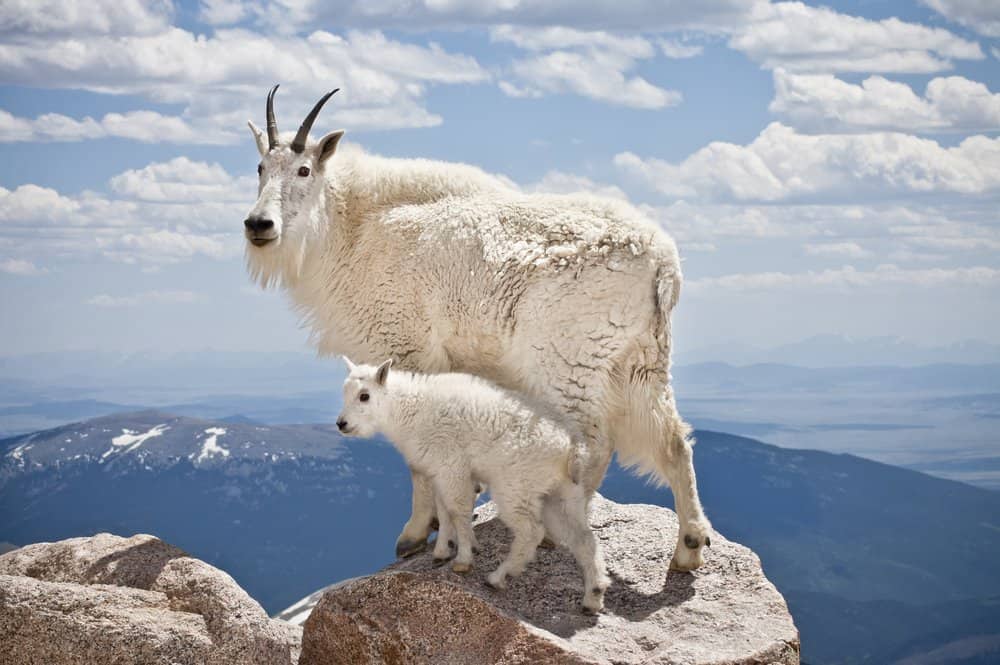
If you have ever been near a billy goat, you know that they stink to high heaven.
©Joshua Schutz/Shutterstock.com
Mountain goats are the embodiment of majestic beauty. With their white coats and long, thin horns, they look like something straight out of a fairytale. But don’t let their beauty fool you–these animals can be quite feisty when provoked!
Mountain goats are herbivores, feasting on a variety of grasses, herbs, and shrubs. They are found in mountainous regions throughout North America North America and Europe, and they can be spotted in alpine meadows, grassy slopes, and rocky outcroppings. As one of the smelliest animals in Canada, they live in the mountains in the western half of the country.
When it comes to behavior, mountain goats are quite territorial, and males tend to fight over territory in the spring. As if that weren’t enough, male mountain goats also have the dubious honor of smelling pretty bad. It’s a scent that’s often compared to a wet dog! This strong odor is produced by a scent gland located near their horns, which becomes more active during the breeding season.
The photo featured at the top of this post is © yhelfman/Shutterstock.com
Thank you for reading! Have some feedback for us? Contact the AZ Animals editorial team.







